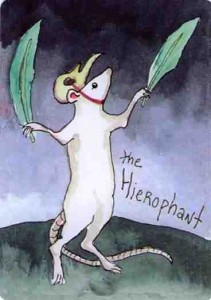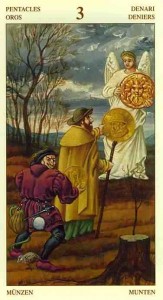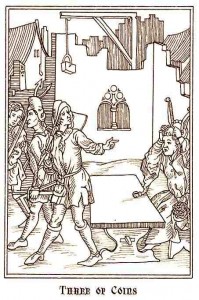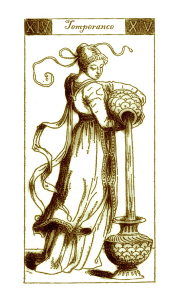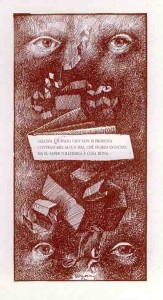This rat is a free-spirited Hierophant who dances with feathers in the wind.
The Hierophant is a person who brings his congregants into the presence of that which is holy: a guide who leads on the path of the spirit and opens the gateway to higher consciousness by means of ritual and surrender. He interprets sacred mysteries and arcane principles. In this manner, he brings the spiritual down to Earth and shows that holiness is not some arcane, obtuse, far-off thing.
The Hierophant teaches by word and by example. He leads rituals that remind his community of their shared beliefs and shared identity. His leadership brings tranquility to the chaos of life. In the presence of the Hierophant, the community blends together, unity is achieved amongst the diversity, and the inner-light of every individual burns bright— illuminated.
There is not just one Hierophant; there is one Hierophant for every community. The breakup of communities and individuation of society makes it difficult to find one’s own spiritual leader. In such situations, the Hierophant becomes inverted. Thus reversed, he stands for (or warns against) the staunch individualism that leads people to refuse to acknowledge the totality of their community. Byproducts of this mindset are: fear of that which is different, stubborn-mindedness, fear of change, institutionalization, propaganda, and fundamentalism.




